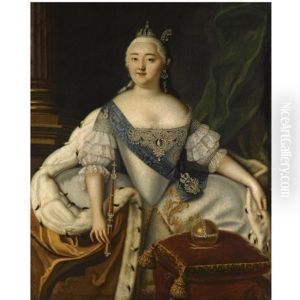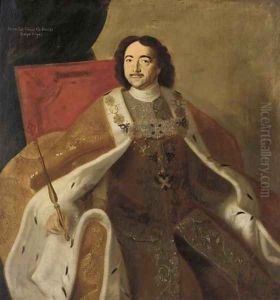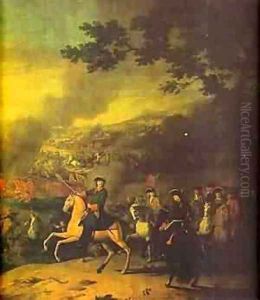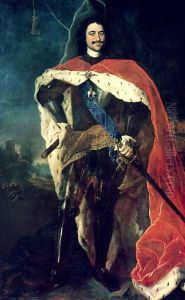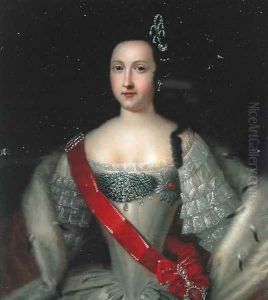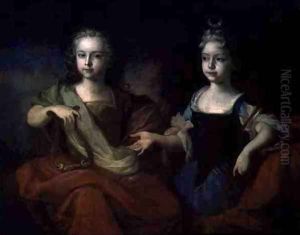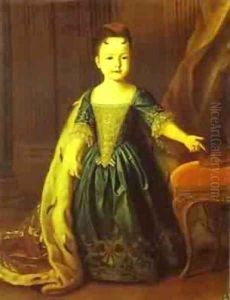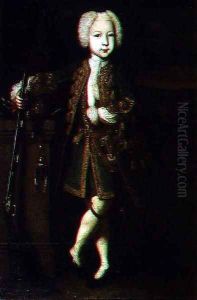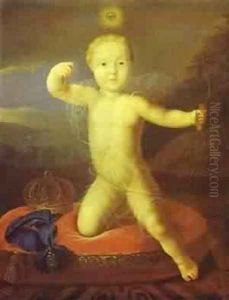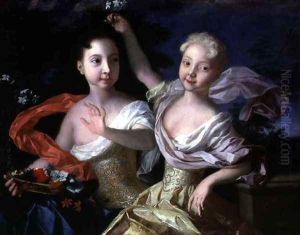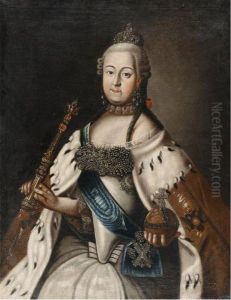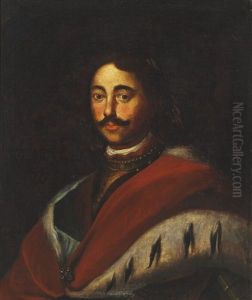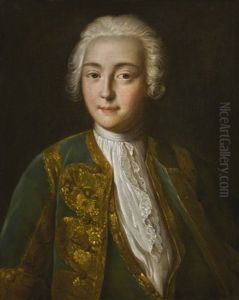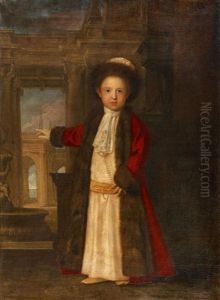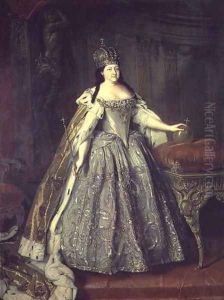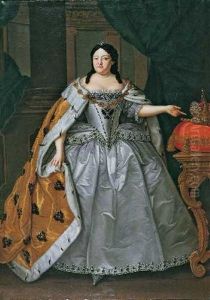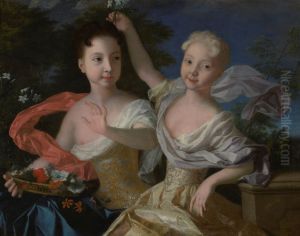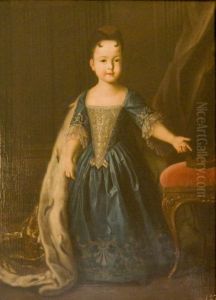Louis Caravaque Paintings
Louis Caravaque was a French portrait painter who achieved significant recognition during his lifetime, particularly for his work at the Russian court. Born in Gascony, France in 1684, Caravaque showed an early talent for painting and soon embarked on a career that would take him across Europe.
Initially, Caravaque honed his skills in Paris, where he worked under influential painters of the time. His early work was typical of the French Baroque style, characterized by dramatic expressions and dynamic compositions. Seeking greater opportunities, Caravaque traveled to Russia in the early 18th century, where his career would reach new heights.
In Russia, Caravaque found patronage under Peter the Great, who was keen on modernizing the Russian Empire and bringing in Western European cultural influences. Caravaque's ability to capture the likeness and personality of his subjects with elegance and a certain vivacity made him a favorite at the Russian court. He was appointed the court painter, a prestigious position that allowed him to paint portraits of the imperial family and other nobility.
Notable works from his time in Russia include his portraits of Peter the Great and other members of the royal family, which are characterized by their rich detail and psychological insight. Caravaque's portraits are remarkable for their use of color and light, as well as the skillful depiction of textiles and materials, which added a luxurious quality to his work.
Louis Caravaque's influence extended beyond his own work, as he also contributed to the development of Russian art by teaching and mentoring Russian artists. His presence at the Russian court, along with other Western European artists, helped to establish a new artistic tradition in Russia that combined elements of Western European art with Russian cultural identity.
Caravaque's career in Russia was prolific, and he continued to work there until his death in 1754. His legacy is preserved in the many portraits that remain, which offer a glimpse into the faces and fashions of the Russian court during a transformative period in its history. Caravaque's work remains an important part of both French and Russian art history, reflecting the cross-cultural exchanges that were a hallmark of the 18th century European art world.
